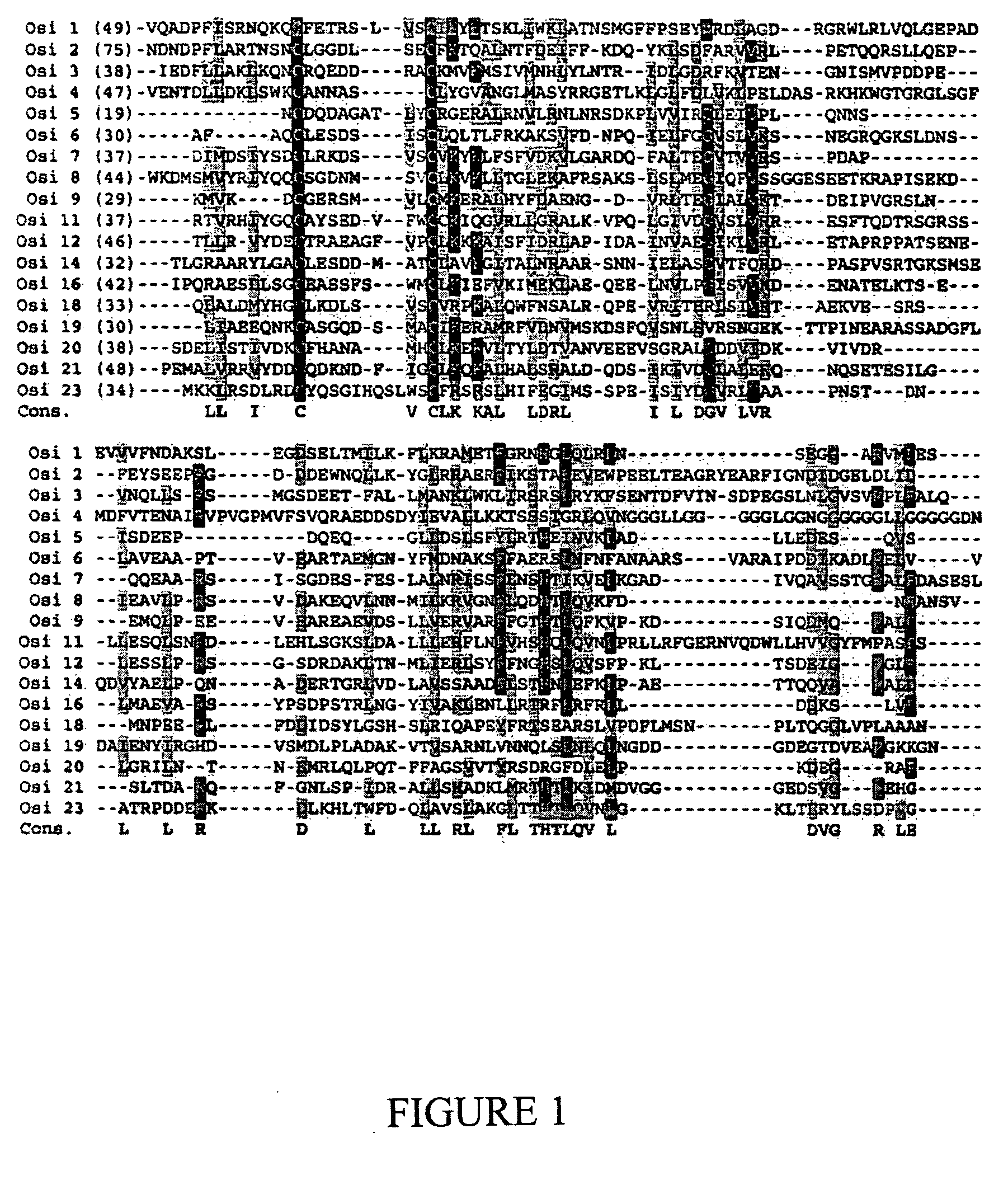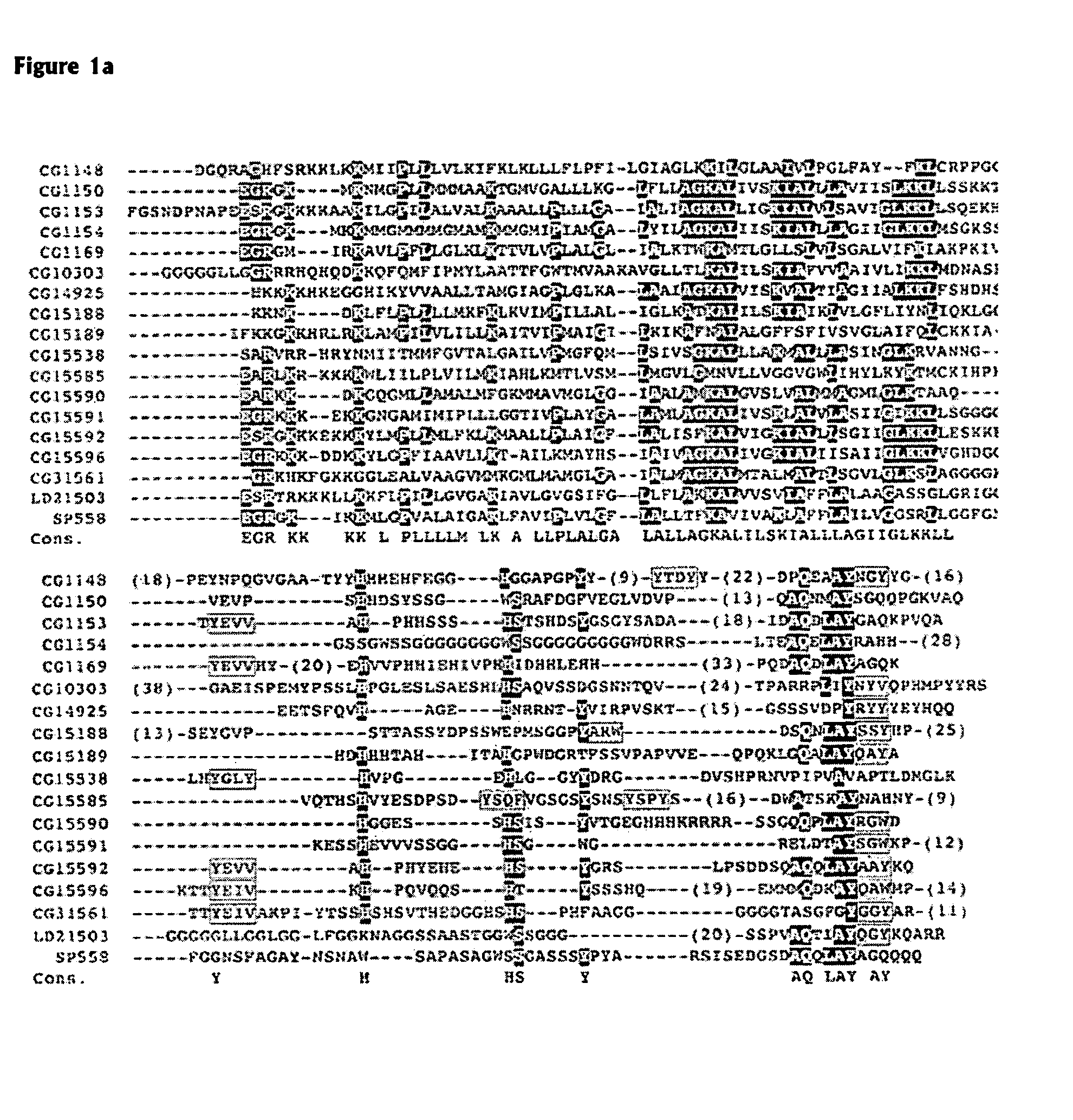Nucleic acid sequences found in Drosophilia melanogaster that encode proteins essential for viability and method of use
a technology of drosophilia melanogaster and nucleic acid sequences, applied in the field of biotechnology and genetics, can solve the problems of increasing the risk of malaria, human and animal populations, and the threat of insect-borne diseases,
- Summary
- Abstract
- Description
- Claims
- Application Information
AI Technical Summary
Benefits of technology
Problems solved by technology
Method used
Image
Examples
Embodiment Construction
[0026]Drosophila rearrangements and mapping: Drosophila stocks were previously described (DORER and CHRISTENSEN 1990; DORER et al. 1995), or were obtained from the Indiana University Drosophila Stock Center. Duplications and deficiencies of Tpl were generated by crossing flies carrying both a Δ2-3 source of transposase and a single P element inserted near Tpl to YS X.YL, In(1)EN y;;Dp(3;3)Tpl pp / Df(3R)Tpl10 pp. Survivors were backcrossed to the Dp / Df line to establish a stock carrying the new rearrangement, often flanked by the starting P element. Three single P element insertions were used: P{ry+t7.2=PZ}l(3)0108601086, inserted in RM62, P{hsneo} l(3)neo331, inserted in castor (COOLEY et al. 1988), and RS2 / 24, inserted in pollux (VINCENT et al. 1990). Inverse PCR was used to amplify the DNA flanking P-induced rearrangements as described (SPRADLING et al. 1999). DNA sequencing was done by the University of Nebraska DNA Sequencing Facility. Breakpoints were mapped by comparing these s...
PUM
| Property | Measurement | Unit |
|---|---|---|
| resistance | aaaaa | aaaaa |
| size | aaaaa | aaaaa |
| amino acid structures | aaaaa | aaaaa |
Abstract
Description
Claims
Application Information
 Login to View More
Login to View More - R&D
- Intellectual Property
- Life Sciences
- Materials
- Tech Scout
- Unparalleled Data Quality
- Higher Quality Content
- 60% Fewer Hallucinations
Browse by: Latest US Patents, China's latest patents, Technical Efficacy Thesaurus, Application Domain, Technology Topic, Popular Technical Reports.
© 2025 PatSnap. All rights reserved.Legal|Privacy policy|Modern Slavery Act Transparency Statement|Sitemap|About US| Contact US: help@patsnap.com



